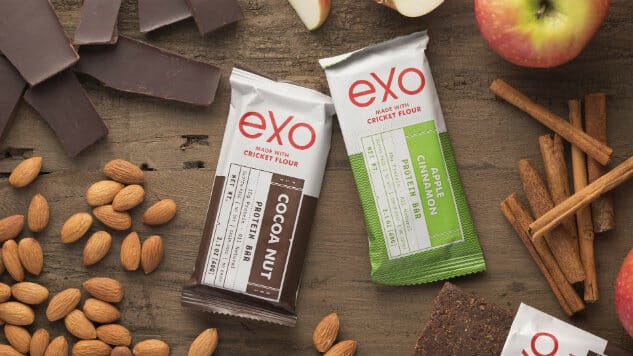What’s Up With That Food: Cricket Protein
Paste uncovers the background of foods you've always wondered about

People often joke that the bug that falls into our water glass, or the one we swallow accidentally while on a run or a bike ride just adds some extra protein to our diet. That’s actually true. Many people believe that eating insects will be necessary in order to feed our hungry, growing population. Cricket protein, in particular, is leading the way.
Type of food: Insect
Name: Referred to as the tropical house cricket, Indian house or the banded cricket, Gryllodes sigillatus
Origins: Humans have been eating insects for thousands of years as part of our hunter-gatherer diet. According to Shami Radia, a co-creator with Neil Whippey of Grub, a UK-based company that sells edible insects and flours and the co-author (along with Whippey) of Eat Grub; The Ultimate Insect Cookbook, says “Insects are commonly eaten throughout Asia, Africa, and Central and South America. Basically, everywhere but here in the West,” he says.
Crickets specifically have long been consumed in southern parts of Asia such as Thailand, Laos and Cambodia, where they’re commonly deep-fried. “They have thriving cricket markets with many small farmers rearing them for consumption,” says Radia.
Why/how did we start eating it: Among others, you can thank Jarrod Goldin, D.C., from Entomo Farms in Norwood, Ontario, who along with his brothers Darren and Ryan, have been farming insects since 2010 at Entomo Farms in Norwood, Ontario. (Darren and Ryan have ten years of experience on top of that.) About 90 percent of their business is wholesale, which means they are supplying cricket protein to many manufacturers and brands, including Exo and Chapul, he says.
“It makes sense in terms of nutritional value, especially when we can predict that in the near future, meat and fish proteins are going to be affordable only to the few,” Martin Matysik, chef at Pangea restaurant at The Culinary Institute of America in Hyde Park, New York, said. “Every customer is offered candied/spicy crickets to try, served with either popcorn or with fried chickpeas.”
In 2013, the United Nations issued a report called Edible Insects, urging more people to turn to entomophagy as a way to combat world hunger, meet a growing population and not further overtax our resources—land, water, and so forth. Two million people worldwide already consume insects as food.
Other advantages associated with insects include the fact that they are more sustainable and humane to harvest and process than even vegetables. “Countless field mice and insects are lost in that process, but that’s another story,” says Goldin. Crickets are frozen, a process that happens very quickly, he says. Then, they are cleaned and roasted before being processed into various forms, the most popular of which is powder for protein bars and other products, along with flour, which is being used even for desserts like the cricket flour cheesecake below.

Aaron Dossey, Ph.D., runs Griopro (www.cricketpowder.com), which has received both Gates Foundation and USDA grants and funding toward innovations in insect-based foods. Dossey’s aim was to create an insect-based food to help tackle the issue of malnutrition in children; an ultra-fine powder was the best way to go. Griopro sells wholesale and retails its products, and is known for its innovative approach that Dossey pioneered. “It is the only powdery and fine 100 percent pure cricket powder available,” he says.
-

-

-

-

-

-

-

-

-

-

-

-

-

-

-

-

-

-

-

-

-

-

-

-

-

-

-

-

-

-

-

-

-

-

-

-

-

-

-

-











































